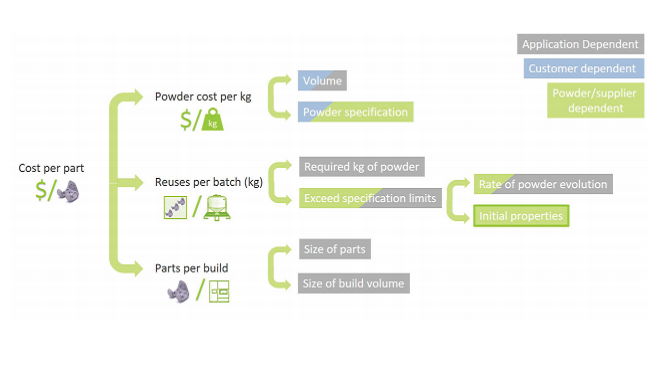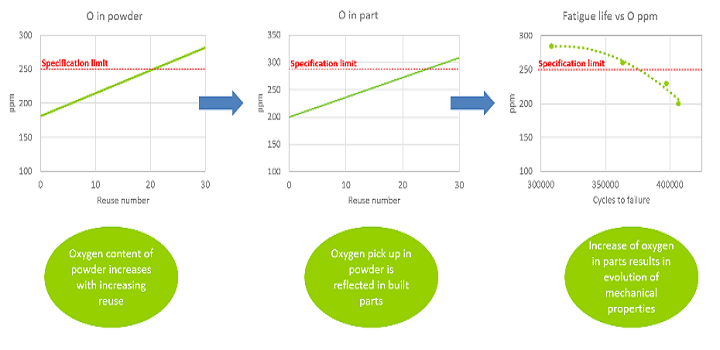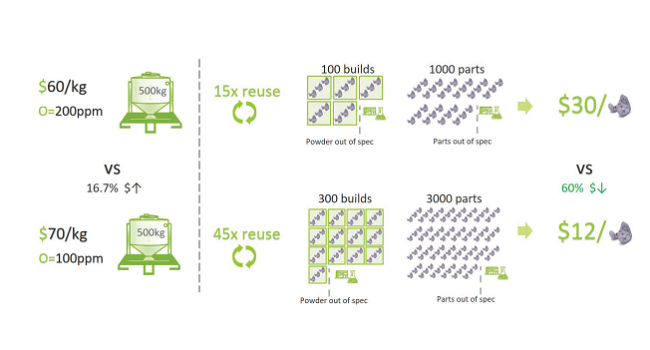LPW Technology, a UK-based provider of metal powders for additive manufacturing, has emphasized the commercial benefits of its Powder Range in its latest case study.
“As with conventional manufacturing, material is generally seen as the highest cost factor in ongoing production, however, powder reuse means that final cost per part does not have to reflect initial powder cost per kilo,” explained an LPW spokeperson.
More powder less wastage
Founded over a decade ago, LPW has exclusively provided its range of metal powders exclusively to the additive manufacturing market. As part of 3D Printing Industry’s Trends in Additive Manufacturing for End-Use Production series, Ben Ferrar, COO at LPW stated:
“In manufacturing, cost is always an important consideration. We are finding that at this point, many of the companies moving towards production are less concerned about the cost of implementation than they are about the cost of getting it wrong.”
“We don’t manufacture for any other sector which is one of the reasons why our powders are used in over 50% of the AM machines installed worldwide.”
Thus, considering the factors that affect a manufacturer’s final cost per part, such as material and its usage, businesses can leverage LPW’s Inconel 718 AM metal powder range. This powder can be commercially reused to decrease production costs as well as “influence the dynamic mechanical performance of a component.”
“The business case for reusing powder is strong, the more times you can reuse a batch of powder the lower the final cost per part is, on the basis of less powder ‘wasted’. The number of times a material can be reused is often determined by the user or a perceived industry standard, but either way material performance in delivering as-built parts is typically the key metric,” LPW stated in the case study.

Metal powder evolution
According to LPW, metal powder can evolve with reuse, altering the properties of a 3D printed part. This is due to its oxygen concentration which increases linearly depending on the number of time it’s reused. Oxygen levels in feedstock material, as well as its process parameters, and gas purity used during atomization contribute to the costly production of evolutionary powders with lower oxygen levels.
Thus, a cheaper high oxygen metal powder can be more appealing to manufacturers, despite the possibilities of a more fatigued component. LPW added that “It may seem more cost effective to use powder with a higher oxygen content but this is only true if a user does not consider reusing the metal powder.”
As seen from the diagrams below, there is a linear relationship between a powders oxygen levels and its amount of reuse. LPW explained: “It is logical that starting with a virgin powder with lower oxygen levels will allow more builds to be completed before the specification limit is reached.” According to LPW, an increase of oxygen content of 50 ppm is sufficient to significantly reduce the fatigue life of the material at elevated temperatures.

The case study goes on to compare the total cost of ownership of two batches of Inconel 718 powder and its reuse; this comparison is said to demonstrate the confidence to reuse powder for cost-effective metal additive manufacturing.
The diagram below depicts a batch with an oxygen content of 200 ppm and a cost of $60 per kg. While another batch has an oxygen content of 100 ppm with a cost of $70 per kg. The case study concludes that although the batch with a cost of $70 per kg is more costly, “it is also 100 ppm lower in oxygen, if we take a material specification limit of 250 ppm, and apply the modest oxygen evolution rate of 3.5 ppm per build, we find we can achieve triple the number of reuses with the lower oxygen powder.”
“This means that despite a 16.7% increase in material cost, we actually see a 60% reduction in the final cost per part versus the cheaper, higher oxygen content powder.”

LPW concluded its findings by stating “the use of high-quality material is not only to achieve optimum results from a single use but to extend the commercial and specification life of the powder. Additive Manufacturing may be at the cutting edge of manufacturing technology, but in this case, the old rule still applies – buy cheap, buy twice.”
Keep up with the latest 3D printing news and case studies by subscribing to the 3D Printing Industry newsletter. Also, follow us on Twitter, and like us on Facebook.
Searching for new talent or seeking a career change? Search and post 3D Printing Jobs for opportunities and new talent across engineering, marketing, sales and more.
Featured image shows a mountain of metal powder. Photo via LPW Technology.

